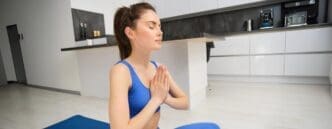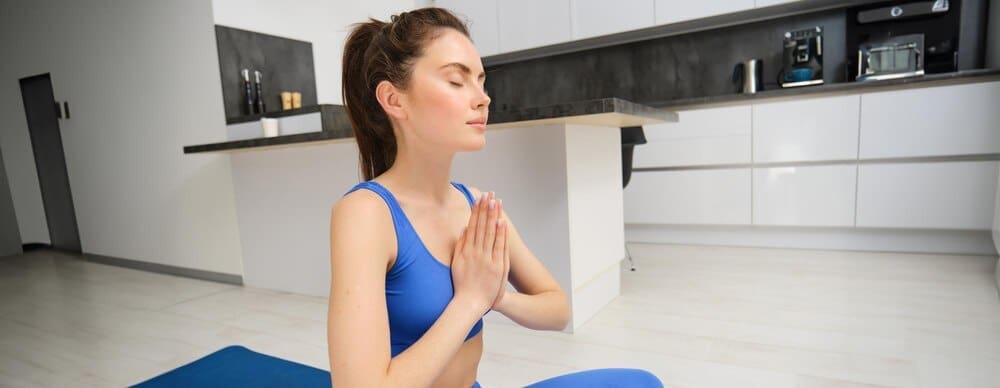In an increasingly fast-paced world, millions are turning to the ancient practice of yoga not just for physical fitness, but as a powerful, evidence-backed tool for managing mental health. By integrating specific physical postures (asanas), controlled breathing techniques (pranayama), and mindfulness, yoga offers a direct pathway to calming the nervous system and alleviating the pervasive symptoms of stress and anxiety. This practice works by shifting the body out of its “fight-or-flight” response and into a state of rest, providing immediate relief and building long-term mental resilience for anyone willing to step onto the mat.
The Science of Stillness: How Yoga Calms the Anxious Brain
While the benefits of yoga can feel almost magical, they are deeply rooted in physiological science. The practice directly influences the autonomic nervous system, which governs our involuntary bodily functions, including heart rate, digestion, and stress responses. Understanding this connection is key to appreciating why yoga is so effective for mental well-being.
Activating the “Rest and Digest” System
Our nervous system has two main branches: the sympathetic (“fight-or-flight”) and the parasympathetic (“rest-and-digest”). Chronic stress keeps us stuck in the sympathetic mode, characterized by high alert, increased heart rate, and elevated cortisol. Yoga, through its combination of slow movements, deep stretching, and conscious breathing, actively stimulates the parasympathetic nervous system.
This activation is largely achieved through the vagus nerve, the longest cranial nerve in the body, which acts as the main highway of the parasympathetic system. The deep, diaphragmatic breathing central to yoga is one of the most effective ways to tone the vagus nerve, sending a powerful signal to the brain that it is safe to relax. This shift helps lower blood pressure, slow the heart rate, and promote a profound sense of calm.
Lowering the Stress Hormone
Cortisol is the body’s primary stress hormone. While useful in short bursts for genuine emergencies, chronically high levels of cortisol are linked to anxiety, depression, sleep disturbances, and a host of other health issues. Multiple studies have demonstrated that a consistent yoga practice significantly reduces cortisol levels in the body.
By lowering cortisol, yoga helps break the feedback loop of chronic stress. As the body learns to spend more time in a relaxed state, the mind follows, finding it easier to detach from anxious thought patterns and rumination.
Rewiring Neural Pathways
The brain is not a static organ; it possesses a remarkable ability to change and adapt, a concept known as neuroplasticity. When we repeatedly engage in an activity, we strengthen the neural pathways associated with it. A regular yoga practice essentially trains the brain to become more adept at entering a calm state.
Over time, this practice can increase gray matter in areas of the brain associated with emotional regulation, self-awareness, and learning, such as the hippocampus and prefrontal cortex. This structural change makes you less reactive to stressors and more capable of responding to challenges from a place of balance rather than panic.
Foundational Poses for Anxiety and Stress Relief
While a full yoga class offers a holistic experience, certain poses are particularly effective at targeting the physical and mental symptoms of stress. The following asanas focus on grounding the body, releasing tension, and encouraging an inward focus, all of which are crucial for anxiety relief.
Child’s Pose (Balasana)
This gentle resting pose is a sanctuary in any yoga practice. By folding the body inward and resting the forehead on the mat, Child’s Pose creates a sense of safety and withdrawal from external stimuli. It gently stretches the hips, thighs, and lower back while relieving tension in the neck and shoulders, areas where stress is commonly held.
To practice, start on your hands and knees. Bring your big toes to touch and sit back on your heels, separating your knees as wide as is comfortable. Fold forward, resting your torso between your thighs and your forehead on the floor. You can extend your arms forward or rest them alongside your body with palms facing up. Focus on breathing deeply into your back, feeling it expand with each inhale.
Cat-Cow Pose (Marjaryasana-Bitilasana)
This dynamic duo is a simple yet profound way to link breath with movement, a core principle of yoga. The fluid motion helps to gently warm up and increase the flexibility of the spine, releasing built-up tension. The act of coordinating breath and movement anchors the mind in the present moment, interrupting the cycle of anxious thoughts.
Begin on all fours with your wrists under your shoulders and knees under your hips. As you inhale, drop your belly, lift your chest and tailbone, and look forward into Cow Pose. As you exhale, round your spine toward the ceiling, tuck your chin to your chest, and press the mat away in Cat Pose. Continue flowing between the two poses for several breath cycles.
Standing Forward Fold (Uttanasana)
A Standing Forward Fold provides a deep release for the entire back side of the body, from the heels to the neck. The mild inversion, where the head is below the heart, has a calming effect on the brain and can help alleviate mild anxiety and fatigue. Allowing the head and neck to hang heavy releases significant tension.
From a standing position with feet hip-width apart, exhale and hinge at your hips, keeping your back straight for as long as possible. Let your hands fall toward the floor or hold opposite elbows. Keep a gentle bend in your knees to protect your lower back and hamstrings. Let gravity do the work, focusing on the release in your neck and shoulders.
Legs-Up-the-Wall Pose (Viparita Karani)
This is one of the most powerful restorative poses for calming the nervous system. By elevating the legs, you reverse the effects of gravity, which helps with lymphatic drainage and improves circulation. It is incredibly passive and requires minimal effort, allowing the body and mind to surrender completely to relaxation.
Sit on the floor with one hip against a wall. Gently swing your legs up the wall as you lie back onto the floor, scooting your sitting bones as close to the wall as is comfortable. Rest your arms out to the sides with palms facing up. Close your eyes and breathe deeply, staying in the pose for 5 to 15 minutes.
Corpse Pose (Savasana)
Though it appears to be the simplest pose, Savasana is often considered the most challenging. It requires you to be completely still and consciously relax every part of your body. This pose is crucial for integrating the benefits of the physical practice, allowing the nervous system to fully absorb the signals of safety and calm.
Lie flat on your back with your feet falling open naturally. Let your arms rest a few inches from your body, palms facing up. Close your eyes and release control of your breath. Systematically scan your body from your toes to your head, consciously releasing any lingering tension. Remain here for at least 5-10 minutes.
Beyond the Poses: The Power of Breath (Pranayama)
The physical postures are only one piece of the puzzle. Pranayama, or breath control, is a cornerstone of yoga’s mental health benefits. When you are anxious, your breath tends to be shallow and rapid. Consciously slowing it down directly calms the nervous system.
Diaphragmatic (Belly) Breathing
This is the foundation of yogic breathing. Lie on your back with your knees bent and place one hand on your chest and the other on your belly. As you inhale slowly through your nose, focus on letting your belly rise. As you exhale, let your belly fall. The hand on your chest should remain relatively still. This ensures you are using the full capacity of your lungs and stimulating the vagus nerve.
How to Begin Your Yoga Practice for Mental Wellness
Starting a yoga practice doesn’t require extreme flexibility or a large time commitment. The most important elements are consistency and self-compassion.
Start Small and Be Consistent
You don’t need to attend a 90-minute class every day. Begin with just 10-15 minutes of gentle stretching and breathing. The cumulative effect of a short, consistent practice is far more powerful than sporadic, intense sessions.
Finding the Right Style
For stress and anxiety, look for slower, more mindful styles of yoga. Hatha yoga is a great starting point as it focuses on basic postures at a slower pace. Restorative yoga uses props to support the body in long, passive holds, making it deeply relaxing. Yin yoga involves holding poses for several minutes to target deep connective tissues and cultivate stillness.
Listen to Your Body
Yoga is a non-competitive practice. The goal is not to achieve a perfect-looking pose but to cultivate awareness of your internal state. Never push into pain. Modify poses as needed and honor where your body is each day. This practice of self-acceptance is, in itself, a powerful antidote to anxiety.
Conclusion: An Invitation to Inner Peace
Yoga offers a holistic and deeply personal toolkit for navigating the challenges of modern life. It is not a quick fix but a sustainable practice that empowers you to regulate your own nervous system, quiet your mind, and build a more resilient and peaceful relationship with yourself. By stepping onto the mat, you are not just stretching your body; you are creating a dedicated space to breathe, release, and reconnect with your own innate capacity for calm.












